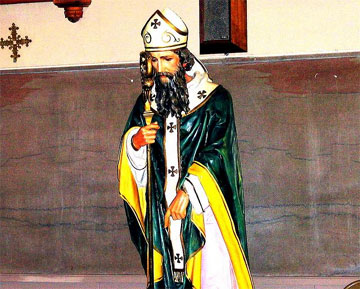 by Preston MacDougall March 17, 2006
At a gas station near one of these subdivisions, a newspaper reporter asked my friend, Nick, what he thought of the county's plan to expand the landfill that sat where the big X was on another man's treasure map. His response was characteristically succinct - "It stinks."
The landfill expansion proposal wouldn't have crept up on folks quite so unpleasantly if nearby Nashville hadn't decommissioned their Thermal Transfer Plant earlier than expected. "Thermal Transfer" is a euphemism for burning garbage to provide heating and cooling, and to reduce solid waste. Trash incineration became a bogeyman for many environmentalists when chemists, such as my esteemed former professor Brian McCarry at McMaster University, developed sensitive instruments and reliable laboratory protocols for measuring the emissions from these facilities, which were growing in popularity with metropolitan governments. To their advocates, trash incinerators killed two birds with one stone. But to the environmentalists, they were killing birds, and us, with their "belching" of dioxins and other "toxic stuff". Dr. McCarry and his research group have received significant media attention for their rapid and accurate identification of both the sources, and the specific chemical identities, of environmental toxins. He has been nicknamed "the toxic detective", and has received numerous awards for both his "detective work", and for his research on technological advances in his field of environmental toxicology. Dr. McCarry also serves the city that McMaster University calls home, in his role as Chair of Clean Air Hamilton. He apparently has different chairs to go with his different hats, because in addition to being the current Chair of the Department of Chemistry at McMaster, he holds the title of Stephen A. Jarislowski Chair in Environment and Health. In what might have come as a surprise to his fellow environmentalists, Brian has publicly come out strongly in favor of new trash incineration technology. The much higher temperatures ensure more complete degradation of matter, and the use of custom-designed chemical filters drastically reduces the emissions from modern incinerators. Concerning landfills, for which he has long been on the case, he says, "no one's sure about what air emissions they produce". He points out that there are also land and water pollution issues surrounding landfills. To further establish his credentials as bogeyman slayer, Brian received his training as a chemist at the University of British Columbia, which is in Vancouver, the birthplace of Greenpeace. Let's just say that, years later, when I was one of his students at McMaster, and he and I would talk about current events in the coffee lounge, I would casually look at his hands for slivers of evidence of excessive tree-hugging. Not that there's anything wrong with that. In fact, years later still, when I was a summer faculty fellow at Stanford University, which, incidentally, is where Brian received his Ph.D. in bioorganic chemistry, and is definitely in Northern California, if you know what I mean, I came pretty close to hugging a few trees myself. On my first trip to Muir Woods, which involved crossing the Golden Gate Bridge, and seemingly following a rainbow formed in the ocean mist, I found thousand-year-old treasures - Sequoia sempervirens, or coast redwoods. Prior to this discovery, I had enjoyed the butterscotch smell of the bark of ponderosa pines when I lived in New Mexico, and had inhaled the woodsy aroma of brand-new redwood deck furniture that I had lounged in back in Canada. So, when I thought I was alone, I put my nose right up against the enormous trunk of one particularly attractive redwood that I met on my hike. The smell was nice, but very subtle. So I started sniffing my way around its huge circumference. No difference. That wasn't the result that I was hoping for, but it didn't at all diminish the sense of awe that this wee little one felt standing beside this other gentle giant. My friend had probably been standing there long before legend has it that Saint Patrick cleared Ireland of its "snakes" and other mythical bogeymen. I wonder who will clear away all the bogeymen that cause people to fear anything that seems "chemical" - as if any thing on this planet is not made of the same kinds of atoms, and subject to the same chemical analysis, as we are. A final thought for this St. Patrick's Day commentary may seem incommensurate with what has preceded it, but it proves that scientists are human too. My beautiful wife, Tara, is more than half-Irish don't you know. So this evening I am going to pucker up, breathe deeply, and do the world's best imitation of the Blarney Stone. It's a little early yet for honeysuckle.
Publish A Letter on SitNews Read Letters/Opinions Submit A Letter to the Editor
|
||
